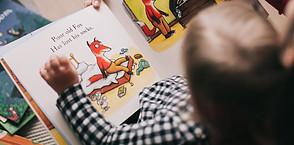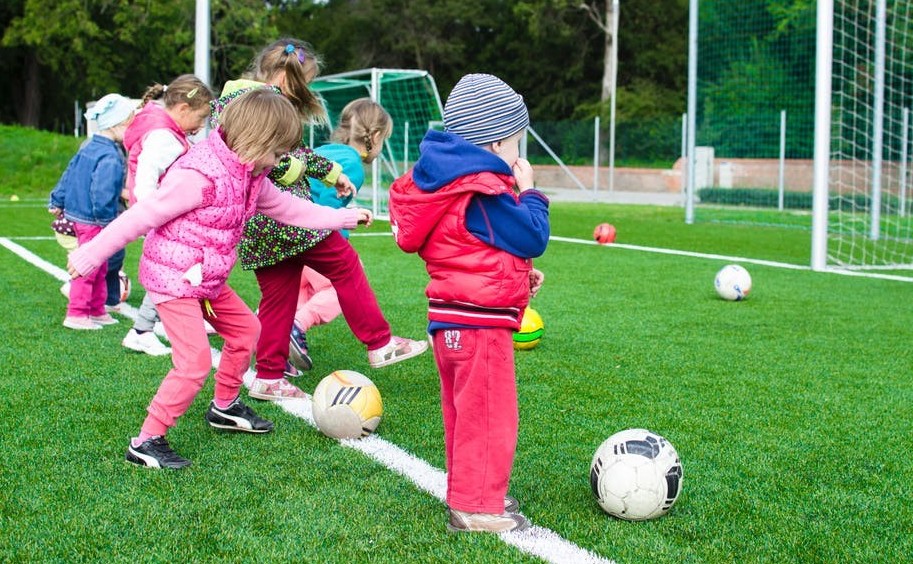In today’s society, there is a trend to push children for greater academic achievement. The sooner the child learns to read, the better the child will do in school. I was one of those parents. My oldest child was not able to read when she entered first grade. I felt at the time she was behind most of her peers. With my next two children, I pushed them so they would be starting to read when they entered school and not be behind most of their peers.

But there is a fault in this theory. Children are being pushed too far, too fast. The necessary skills needed to build a strong foundation are being overlooked. Children are suffering because we are not allowing them adequate time to develop these critical milestones.
Did my other two children do better in school than my oldest child, because they were more advanced in reading when they started school. No. Just because they were beginning to read when they started school did not mean they did better in school. One thing that my oldest child did have when she started school was a strong foundation. She had developed the necessary skills needed to build this strong foundation to grow from.
One of these milestones that we are going to be discussing today is crossing the midline. We will look at the importance of crossing the midline and activities that you can do to help your child fully develop this critical milestone.
What is the Importance of Crossing the Midline?
Before we talk about the importance of crossing the midline, you need to understand the meaning of the midline. Imagine your body being split in two. The imaginary line that separates these two sides of the body would be called the midline. If you separate your body top and bottom, the midline would be your waist. If you split you body left and right, the midline would be down the middle of your body.
Our brain is also divided into two parts. These two parts are the right hemisphere and the left hemisphere. Each of these hemispheres of the brain are designed to carry out a different task. In between these two hemispheres is a mass of tissue called the corpus callosum which contain the nerve fibers that allow the two sides to communicate. When children cross the midline, it forces both sides of their brain to work together which in turns develop higher order thinking skills, sensory integration, body awareness, and critical thinking.
Crossing the midline is the ability to spontaneously cross over the midline of the body during an activity. This ability is a learned trait. This trait starts as early as 6 months and by the age of 4 children should be able to cross the midline with ease. Children cross the midline when they perform tasks on the opposite sides of the body. Such as reaching across the body to grab a toy or a snack.
Many everyday activities involve crossing the midline.

- Crawling
- Jumping
- Putting on socks and shoes
- Cutting
- Writing
- Reading
- Sports
Difficulties when children fail to cross the midline
One main reason children have not developed the ability to cross the midline is the lack of activities that promote crossing the midline. Babies are spending too much time in baby equipment (bouncies, swings, carriers). And children are spending too much time sitting in front of TVs and computers. When babies are sitting baby equipment or children sitting in front of a screen, they are not given the opportunities to interact with their environment in a way that promotes crossing the midline.
Children who fail to develop the ability to cross the midline have difficulty with bilateral movement. Bilateral movement is the ability to coordinate both sides of the body at the same time. Bilateral movement is necessary for both gross and fine motor skills. When there is a delay in bilateral movement, there will be a delay in both gross and fine motor skills.

These chilren will also have difficulty tracking an object from one side to the other. The ability to track an object from one side to the other is necessary for reading and writing. While reading, children need to move their eyes from left to right across the page. Children who have difficulty with crossing the midline will have difficulty tracking the words from left to right across the midline, which may lead to reading difficulties.
When writing, children will use their left hand to write on the left side of the paper and their right hand to write on the right side of the paper. This results in a decrease coordination and decreased motor control. Children don’t form a dominate hand and end up with two unskilled hands.
Sometime children who have difficulty crossing the midline will exhibit some behavior problems. They may have difficulty listening and may have emotional outbursts. They may become angry and frustrated when engaging in fine motor activities due to less refined hand skills. Some kids have also shown increased pressure and signs of anxiety in school.
Sign kids have difficulty crossing the midline
One thing to look for is the swapping of hands during an activity such as writing or coloring. Children will swap their hands so that they write on the left side of the paper with their left hand and write on the right side of the paper with their right hand. Some people may see children using both hands and think they are ambidextrious, but in fact, they are having difficulty crossing that midline.
Not all children that have difficulty crossing the midline will swap their hands during an activity. Some children will move the paper over to the far side, so that they will not have to cross the midline while coloring or writing. Other children may rotate the paper so that they are writing from the bottom to the top which also keeps them from having to cross the midline.
Also, look at the child’s fine motor skills. Look to see if the child is having trouble holding and manipulating a pencil. These children tend to have poor handwriting skills because they lack the necessary fine motor skill. These kids also have a hard time keeping up to the class because of the poor handwriting.
Children who have difficulty crossing the mid line will also tend to rotate their trunk when reaching for an object. This rotation helps them avoid crossing the midline.
Activities to help Children Learn to Cross the Midline
Since crossing the midline is a learned trait, children who have difficulties can learn to cross the midline. There are many activities to promote crossing the midline. Play based activities are the key.
- Crafts — Threading bead, lacing, cutting and tearing paper,
- Connecting and separating construction toys — legos, magnetic blocks, mega blocks.
- Play-doh — rolling, pinching, pulling, using play-doh tools
- Flashlight tag — lay on your back in a dark room. Shine a flashlight around the room. Have your child follow the light around the room with their finger.
- Musical instruments — banging tambourine or sticks together at the midline of the body
- Sand Play — scooping from one side and putting it in a bucket on the opposite side
- Drawing Figure 8s — Using crayons, draw large figure 8s on a large sheet of paper making sure to cross the midline. Children can also use their hands to make large figure 8s in the air.
- Streamers — use the streamers to make big circles or 8 patterns in the air
- Toy Cars –crawling on the carpet as they push toy cars around a path with lots of twists and turns.
- Pass the Ball –while sitting in a circle, have the children pass the ball around the circle using both hands
- Games — Hoke Pokey, Twister, Simon Says (touch left hand to right knee)
- Pop Bubbles — child can only pop bubbles using one hand.
- Exercises — Touching opposite elbows and knees, windmills
- Washing the Car — make a point to wash in big circles so your child has to cross the midline.
- Patty Cake
- Tummy Time — for babies, give them plenty of opportunity to get down and interact with toys around them.
- Finger Puppets — putting on and taking off the finger puppets
- Sorting games — using only one hand so they have to reach across the midline to pick up the items.
Crossing the Midline
Even though there is a push for greater achievement in schools today, let’s not forget the skills needed to build a strong foundation for learning. Give children plenty of time and opportunities to build these skills. Remember that crossing the midline is a learned skilled. If your child is having difficulty, there are plenty of activities you can do with your child to help develop this skill. Ten minutes a day doing an activity that promotes crossing the midline can make a big difference to your child. And best of all, they will be playing while they do it.
